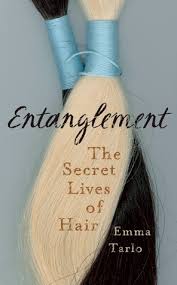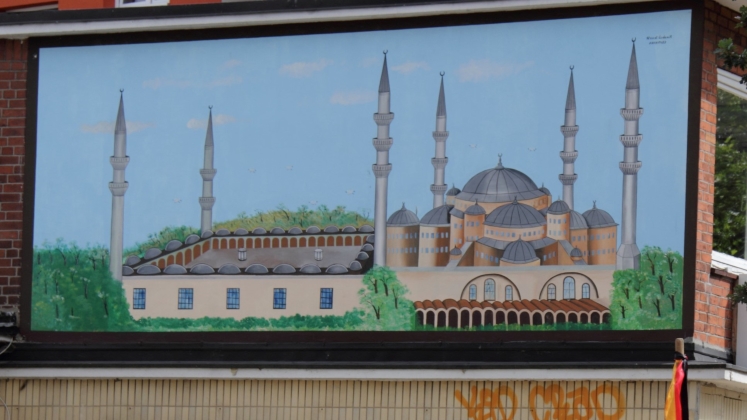In Entanglement: The Secret Lives of Hair, Emma Tarlo explores the hidden networks through which human hair circulates around the world, tangling together the local and the global through diverse sites, practices and processes. The book’s delicate movements between spaces, modes of individual narration and contexts make this a delight to read, writes Shannon Philip.
Entanglement: The Secret Lives of Hair. Emma Tarlo. Oneworld Publications. 2016.
Our encounter with human hair is often a familiar experience. Most people spend time taking care of their hair daily — washing it, cutting it, cleaning it and styling it — making a public and social world around hair. This world can often also get deeply personal through our encounters with intimate body hair and its management or removal in keeping with the trends of the day. Yet, at the same time, hair occupies another secret world which is less talked about. This is the world of hair loss, the realm of hair pieces, wigs and hair extensions, of keeping up appearances and managing people’s anxieties and needs. This realm is revealed in all its complexity in Emma Tarlo’s new book, Entanglement: The Secret Lives of Hair.
The title of the book, Entanglement, reflects the entwined ways in which different sites, places, practices and processes around hair get tied together. The book moves between continents and spaces, between the local and the global, bringing together fine-grained observations with theory and archival material. It takes us on a journey through hair factories in China to Hindu temples famous for their hair offerings as well as the Jewish communities living in New York and Jerusalem, the wig collections of the Dutch National Opera and Ballet in Amsterdam as well as hair museums and Youtube hair tutorials. On this varied journey, the familiar world of human hair is woven together with personal and political practices that are usually hidden.
Tarlo begins her voyage into the secretive world of hair by exploring its long history linked with global trade in the late nineteenth century at a time of rapid colonial expansion. The historical entanglements of elaborate French hairpieces of the nineteenth century and our modern-day multi-million-pound global hair industry reveal the many complex continuities and changes in the world of hair. In this process, race, gender, class and histories all come together to shape the way human hair travels and is understood by various people today.
 Image Credit: Emily Dickinson’s Hair (Amherst College Public Domain Mark 1)
Image Credit: Emily Dickinson’s Hair (Amherst College Public Domain Mark 1)
For example, we are given a glimpse into a hair workshop in Qingdao in China where the author explores the stages of making a hairpiece which will eventually end up in the West. Chinese workers are engaged in the laborious process of making high-end custom-made wigs and toupees on dummy heads with various markings to indicate colour, curl, density, parting etc. The author explains that the names on the heads, such as Dave, Mitch or Stephen, allow the reader to imagine what and who these heads are being prepared for thousands of miles away. As Tarlo makes clear, behind the technical instructions for making hairpieces lies the intimate details of a person’s secret struggle with hair loss somewhere on the other side of the world (23).
The rigour of the research that has gone into this book is shown as Tarlo then traces these hairpieces from China on their journey to the West. In Brighton, for example, the author takes us to a training session with hairdressers who learn how to order wigs and and custom-made hairpieces. Here, readers are introduced to Jane, the trainer in-charge, who shows the hairdressers how to use clingfilm on the skulls of their customers after dusting talcum powder to get exact replicas of their heads and their hair needs. These clingfilm templates are then carefully posted off to factories in China, like the one in Qingdao. In reading these chapters, the complexity and connectivity involved in making such wigs really come to the fore.
Tarlo goes further to reveal how such processes in the global hair trade are further connected to other sites across the world. One such institution she explores is the Hindu temple of Tirumala in South India, which has become the world’s second wealthiest religious institution through its trade of human hair offered at the temple as sacrifice by pilgrims. Tarlo’s ethnographic observations at the holy pilgrimage site show how the practice of shaving heads and offering hair to the gods is a deeply powerful experience for millions of pilgrims who come to the temple every year. One such pilgrim we meet in the book is a young mother for whom the shaving of her hair brings a thrilling sensation of joy as the blade scrapes her head and leaves it smooth. The pilgrim describes it as the happiest moment of her life, second only to the birth of her children, revealing the physical and emotional excitement of tonsuring and the importance it holds in the lives of devotees. Such religious offerings are then sold by the temple to traders who in turn supply it to the global hair trade and thus create an entangled web of connections through hair. Interestingly, Tarlo explains that such sacrificial hair offerings are sold on the market as ‘ethical hair’, but she always writes from a position of great empathy and without making any value or moral judgments about any stage of the journeys of human hair.
It is precisely such delicate movement between spaces, modes of individual narration and contexts that make Tarlo’s book a delight to read. The skill of the author allows for both the gravity and emotion of the moment of hair sacrifice to be brought together beautifully with a sense of the mechanical processing in wig factories, along with the hair anxieties of individuals. Tarlo’s aim in the book is to understand the ‘complex choreography’ of hair as well as creating a ‘collective conversation’ between people distanced socially, geographically, economically and even temporally but whose lives are tenuously connected through hair (364). This she successfully achieves. Ultimately, then, Entanglement is a book that is simultaneously political and personal as well as an insight into a world that is both familiar and unfamiliar.
Shannon Philip is a PhD student at the Oxford Department of International Development where he works on gender and urban politics of contemporary India. He has spent twelve months living in New Delhi doing ethnographic fieldwork with young Indian men about their gendered identities and practices of grooming and styling as one part of his broader work.
Note: This review gives the views of the author, and not the position of the LSE Review of Books blog, or of the London School of Economics.


 Find this book:
Find this book: 





1 Comments